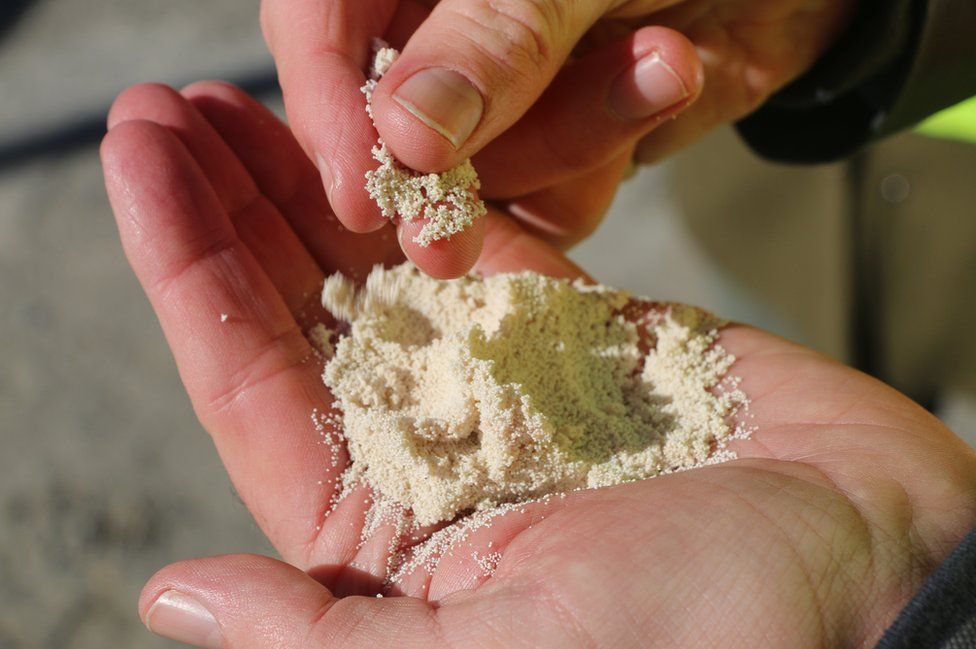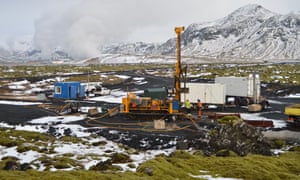“The UK’s Massive Tree-Planting Campaign Isn’t Moving Fast Enough”
One of Europe’s least-forested countries has a plan to fight climate change. That’s much easier said than done.

The UK’s Tree-Planting Campaign Is Falling Behind – Bloomberg
Compared with most of its neighbors, the UK is relatively treeless, its woodlands felled centuries ago and never replanted. Just 13% of its territory is covered by forest, compared with roughly a third or more in France, Germany and Spain. The UK has set a goal of reaching net-zero carbon emissions by 2050. Even the most ambitious scenarios don’t call for a complete end to fossil fuel use, so meeting the target will be impossible without finding ways to capture carbon from the atmosphere.
“The World’s Biggest Plant to Suck Carbon Dioxide From the Sky Is Up and Running”

World’s Biggest Direct Air Capture Plant Comes Online (gizmodo.com)
The world’s biggest direct air capture (DAC) plant is set to come online in Iceland on Wednesday. The moment is an important one in developing new technologies to help suck carbon dioxide out of the air—but raises a whole host of questions on the future of how we’re going to put those technologies to use.
“Self-healing concrete eats CO2 to fill its own cracks in 24 hours”

https://newatlas.com/materials/self-healing-concrete-co2-blood-enzyme/
Concrete has a massive carbon footprint, so technologies that boost its performance and enable it to last longer could have profound benefits for the environment. This has led to the development of self-healing concrete that can repair its own cracks, and scientists have now demonstrated an exciting new form of this that makes use of an enzyme found in human blood.
“We Already Have the World’s Most Efficient Carbon Capture Technology”

Empress trees mature several times faster than your average oak or pine and absorb about 103 tons of carbon a year per acre.
“Climate change: ‘Magic bullet’ carbon solution takes big step”

https://www.bbc.co.uk/news/science-environment-47638586
A technology that removes carbon dioxide from the air has received significant backing from major fossil fuel companies.
“CO2 turned into stone in Iceland in climate change breakthrough”

Carbon dioxide has been pumped underground and turned rapidly into stone, demonstrating a radical new way to tackle climate change.
The unique project promises a cheaper and more secure way of burying CO2 from fossil fuel burning underground, where it cannot warm the planet. Such carbon capture and storage (CCS) is thought to be essential to halting global warming, but existing projects store the CO2 as a gas and concerns about costs and potential leakage have halted some plans.
The new research pumped CO2 into the volcanic rock under Iceland and sped up a natural process where the basalts react with the gas to form carbonate minerals, which make up limestone. The researchers were amazed by how fast all the gas turned into a solid – just two years, compared to the hundreds or thousands of years that had been predicted.
“Treating Soil A Little Differently Could Help It Store A Huge Amount Of Carbon”

Climate change is a massive problem with the potential to completely reshape the world, both literally (with rising sea levels and melting glaciers) and figuratively (with the way we grow food, or the way that we handle allergies). And while the consequences caused by climate change could be huge, the solutions — transitioning to a completely fossil fuel-free economy, or geoengineering — can often seem equally daunting.
But what if something as simple as the dirt under your feet could help mitigate some of the worst of climate change? The Earth’s soils contain a lot of carbon, and helping to manage and restore them could be a key way to help tackle climate change, according to a recent study in Nature.
“Scientists Seeking to Save World Find Best Technology Is Trees”
Oxford University scientists, after a year of research, have determined the best technology to suck carbon dioxide from the atmosphere and try to reverse global warming.
It’s trees.
They considered methods ranging from capturing emissions from factories and power stations to extracting carbon dioxide directly from the air, and adding lime to oceans to increase their absorption of the gas, a study released on Tuesday showed.
None were more promising than planting trees, or baking waste wood to form a type of charcoal that can be added to soil. Relative to other so-called Negative Emissions Technologies, afforestation and biochar are low-cost, have fewer uncertainties and offer other benefits to the environment, the research shows.
“CO2 emissions bury the UN summit”
A coal pile buries the UN General Assembly, gas races down 42nd Street and then New York is lost under a blue mountain. These dramatic CGI scenes, depicting actual quantities, create an immersive journey that brings home the scale of global carbon emissions and fossil fuel consumption.
A dynamic four-minute film, being launched at the UN Climate Change Summit in New York September 2014, shows the part that carbon capture and storage can play in limiting global climate change to 2 degrees.
To see the full film click the link below.


Recent Comments